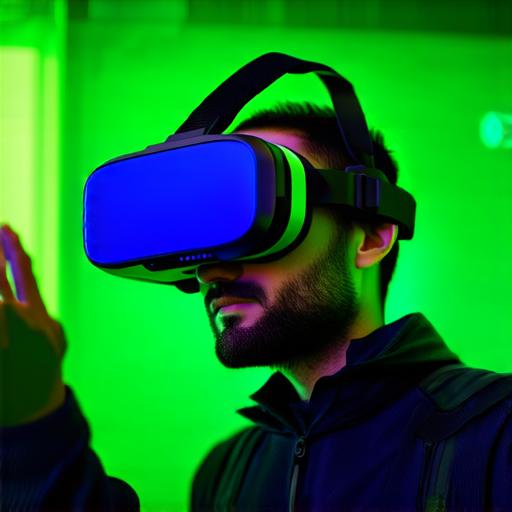Virtual reality (VR) is a technology that allows users to experience a simulated environment in a computer-generated world.
The basics of virtual reality
Virtual reality technology consists of several components that work together to create a realistic and immersive experience. The most important component is the VR headset, which is worn on the head and blocks out the real world with a computer-generated image. The HMD contains sensors that track the movement of the user’s head and adjust the virtual environment accordingly.
Another important component is the VR controllers, which are handheld devices that allow users to interact with the virtual environment. These controllers are equipped with sensors that track the user’s hand movements and translate them into actions in the virtual world.
The virtual environment is created using computer graphics and software, and it can be customized to suit the needs of the user. The VR headset displays a 360-degree image, giving the user a sense of being in the middle of the virtual environment.
Types of virtual reality experiences
There are several types of virtual reality experiences available, each with its own unique features and applications. Some of the most popular types include:

- Gaming – Virtual reality gaming allows users to immerse themselves in a computer-generated world and interact with the game environment using VR controllers.
- Training and education – Virtual reality can be used to train professionals in various fields, such as medicine, aviation, and military. It provides a safe and controlled environment for users to practice their skills without risking injury or damage to equipment.
- Therapy – Virtual reality therapy can be used to treat mental health disorders, such as anxiety and depression. It allows users to confront their fears and anxieties in a controlled environment.
- Tourism – Virtual reality can be used to create immersive travel experiences that allow users to explore different parts of the world without leaving their homes.
- Entertainment – Virtual reality entertainment includes experiences such as concerts, movies, and theme parks that allow users to experience them in a new and exciting way.
Summary
Virtual reality technology allows users to experience a simulated environment in a computer-generated world. The VR headset and controllers work together to create an immersive and interactive environment that can be customized to suit the needs of the user. Virtual reality has a wide range of applications, including gaming, training, therapy, tourism, and entertainment. As virtual reality technology continues to evolve, it is likely to become an increasingly popular tool for a variety of purposes.
